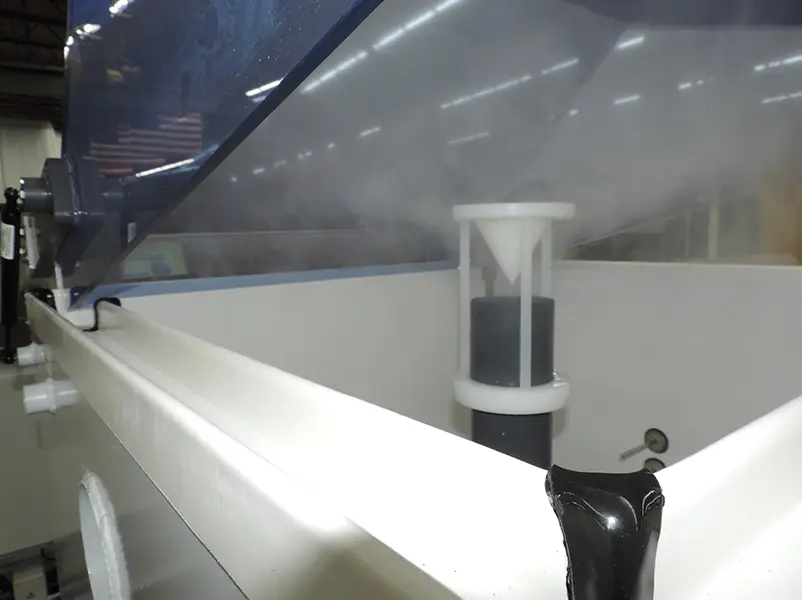ASTM Testing: Your Comprehensive Guide
ASTM stands for the American Society for Testing and Materials, now known as ASTM International.
ASTM testing refers to the established procedures, specifications, guidelines, and classifications developed by ASTM International. These standards are used globally to improve product quality and ensure health and safety, among other functions.
ASTM testing standards cover a wide range of industries, including metals, construction, petroleum, and consumer products. Moreover, it covers emerging fields, such as nanotechnology, additive manufacturing, and industrial biotechnology.
Developed through a transparent, consensus-driven process by over 30,000 technical experts and business professionals from more than 140 countries, these technical standards provide frameworks for testing and ensuring the performance, safety, and reliability of products and materials worldwide.
A Brief History of ASTM Testing
ASTM International’s roots stem back to 1898 when a group of scientists and engineers — led by Charles Benjamin Dudley — formed the American Society for Testing Materials to address frequent rail breaks in the developing railroad industry.
During that time, they created standards for the steel used in rails to enhance safety and reliability. Over the years, ASTM standard testing expanded its scope to include a wide range of industries, reflecting this change by renaming itself to ASTM International in 2001. Today, ASTM International standard testing frameworks, developed through a transparent, consensus-driven process, have further increased in scope and sophistication, guiding the testing and quality assurance of products and materials worldwide.
5 Purposes of ASTM Testing
ASTM testing serves multiple integral functions in various industries. These functions ensure that products and materials meet specific criteria for quality, safety, and performance, thereby benefiting manufacturers, consumers, and the global market.
1. Enhancing product quality: ASTM testing helps improve product quality by providing clear specifications and classifications that manufacturers must follow. Adhering to these standards ensures consistency and reliability in the production process, leading to improved quality control.
2. Ensuring health and safety: A central focus of many ASTM standards is on the safety implications of materials and products. These standards help identify potential hazards and mitigate risks by providing comprehensive guidelines for testing and evaluation.
3. Facilitating market access and trade: ASTM standards provide a common framework that different countries and companies can adopt, simplifying the process of international trade. Products that meet these standards are more readily accepted in global markets, aiding companies in expanding their reach and competing internationally.
4. Building consumer confidence: Testing and certifying products according to ASTM standards yields consumer trust. Consumers can be confident that these products have undergone rigorous evaluation processes to meet established quality and safety benchmarks. These benchmarks ensure that products perform as advertised, are safe for use, and are free from harmful defects or contaminants.
5. Supporting emerging fields: ASTM testing also aids in the advancement and quality control of emerging fields, such as nanotechnology, additive manufacturing, and industrial biotechnology, among others. By developing relevant standards for these new technologies, ASTM ensures their safe and effective integration into various applications. For instance, in additive manufacturing, ASTM standards provide guidelines for evaluating material properties, ensuring the structural integrity of 3D-printed components, and verifying the accuracy of printing processes. These standards help bridge the gap between innovation and practical application, allowing new technologies to be safely and reliably adopted in the market.
ASTM Standards in Practice: Types of ASTM Tests
Among the various ASTM standards, ASTM B117 and ASTM B368 inform the procedures and conditions for conducting salt spray (fog) and copper-accelerated acetic acid-salt spray (CASS) tests, respectively — which are utilized to evaluate the corrosion resistance of metals and coated metals.
- ASTM B117: ASTM B117 is a widely recognized standard for conducting salt spray (fog) tests to assess the corrosion resistance of metals and coated metals. This ASTM test standard outlines the apparatus, procedures, and conditions required to create a controlled corrosive environment. By exposing specimens to a fine mist of salt solution within a test chamber, it simulates the effects of a saline environment on the materials.
- ASTM B368: ASTM B368 is the standard test method for conducting CASS tests, specifically designed to evaluate the corrosion resistance of decorative copper/nickel/chromium or nickel/chromium coatings, as well as anodized aluminum. This test method involves exposing specimens to a corrosive environment created by a fine mist of acetic acid and copper chloride solution within a controlled test chamber. The CASS ASTM test simulates harsh service conditions to assess the durability and performance of coated metals and anodized aluminum. By accelerating the corrosion process, it helps identify potential weaknesses and supports the development of superior electroplating processes, ensuring higher quality and longer-lasting products.
In practice, at Auto Technology, we adhere to ASTM B368 standard to evaluate the corrosion resistance of electroplated coatings and anodized aluminum within CASS tests. Our testing protocols include the precise preparation of specimens, controlled exposure to the acetic acid and copper chloride mist, and detailed post-test analysis. Similarly, we follow the ASTM B117 standard for salt spray testing to assess the corrosion resistance of metals and coated metals by preparing specimens, placing them in a controlled salt fog environment, and monitoring their exposure over a specified period.
Both standards ensure that our testing processes are rigorous, consistent, and reliable, providing business-critical data to our clients for improving material durability and performance. By adhering to ASTM safety standards, we help our clients meet industry regulations and enhance the longevity of their products.
Partner with Auto Technology for Superior Corrosion Testing
With Auto Technology, you can ensure that your materials undergo comprehensive and precise tension testing procedures that align with the highest industry standards. For over 75 years, we’ve been positioned at the forefront of corrosion testing innovation, providing our clients with accurate, reliable data to improve material durability and performance.
Our rigorous adherence to ASTM standards ensures that you receive precise, dependable results that help you meet regulatory requirements and yield market readiness and quality assurance.
Click here to speak with one of our team members today.

